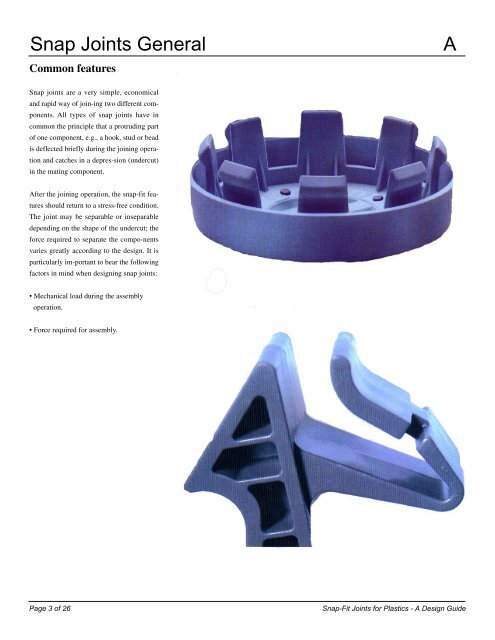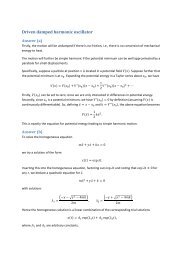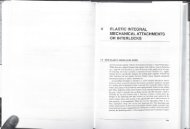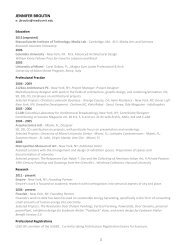Snap-Fit Joints for Plastics - A Design Guide - MIT
Snap-Fit Joints for Plastics - A Design Guide - MIT
Snap-Fit Joints for Plastics - A Design Guide - MIT
You also want an ePaper? Increase the reach of your titles
YUMPU automatically turns print PDFs into web optimized ePapers that Google loves.
<strong>Snap</strong> <strong>Joints</strong> General A<br />
Common features<br />
<strong>Snap</strong> joints are a very simple, economical<br />
and rapid way of join-ing two different components.<br />
All types of snap joints have in<br />
common the principle that a protruding part<br />
of one component, e.g., a hook, stud or bead<br />
is deflected briefly during the joining operation<br />
and catches in a depres-sion (undercut)<br />
in the mating component.<br />
After the joining operation, the snap-fit features<br />
should return to a stress-free condition.<br />
The joint may be separable or inseparable<br />
depending on the shape of the undercut; the<br />
<strong>for</strong>ce required to separate the compo-nents<br />
varies greatly according to the design. It is<br />
particularly im-portant to bear the following<br />
factors in mind when designing snap joints:<br />
• Mechanical load during the assembly<br />
operation.<br />
• Force required <strong>for</strong> assembly.<br />
Page 3 of 26 <strong>Snap</strong>-<strong>Fit</strong> <strong>Joints</strong> <strong>for</strong> <strong>Plastics</strong> - A <strong>Design</strong> <strong>Guide</strong><br />
4





